 Italy (1923) Seaplane Carrier
Italy (1923) Seaplane Carrier
Italy’s ww2 seaplane carrier: De Facto naval rivalry between France and Italy was traduced on an almost ship-to-ship basis: To the Giuseppe Miraglia, first Italian seaplane carrier modified as such in 1923, answered the French Commandant Teste, which was larger and built as a dedicated ship in 1929. The Miraglia was the product of the heavy use of seaplanes in WW1 for reconnaissance and attacks. Their use in combination with the fleet predated the use of radars. The French already experimented the cruiser Foudre as such before the war and showed the concept was more interesting than using a forward screen of destroyers or light cruisers for such role. Seaplane just were faster and covered much more area, plus they were perfectly suited for the sunny Mediterranean which allowed long range visibility.
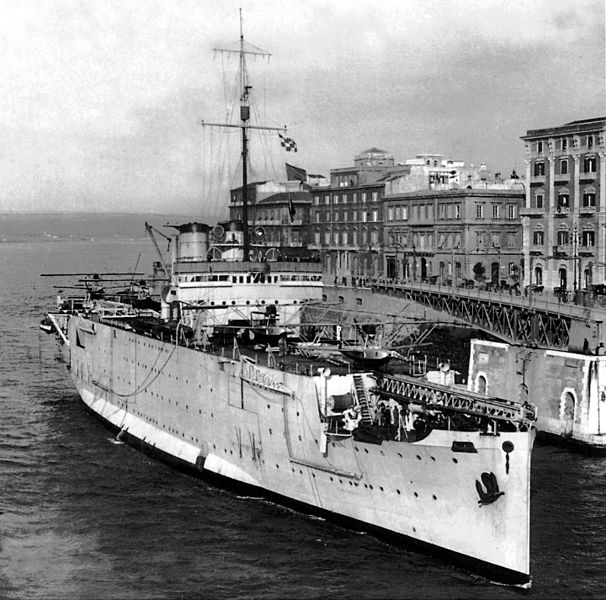
Miraglia at Tarento
A precursor: 1915 seaplane carrier Europa
According most sources, Italy in ww1 only operated one seaplane carrier/tender: The Europa. This 6400 tonnes British ship (8500 fully loaded) built in Glasgow in 1895 as SS manila (4134 grt) was renamed Salacia in 1898 and until 1911. She became German (name unknown or, same) and in 1913 she was purchased by Italy and renamed Quarto (later dropped to free a cruiser name). The Regia Marina purchased her in 6 February 1915 and converted her as a seaplane carrier. She was recommissioned as the Europa in October, 6, and could operate in this new capacity up to eight seaplane carriers. However in practice this was reduced to two fighter and two reconnaissance types. In the end she was also fitted as a submarine tender. She was stricken and broken up in 1920 but bring some extremely valuable operational experience to the Italian Navy.

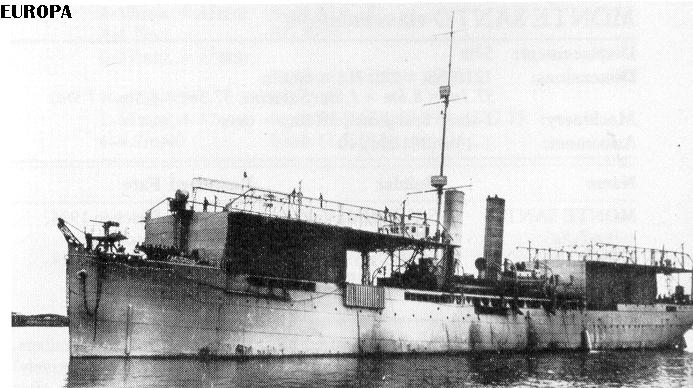
Conversion of the Miraglia
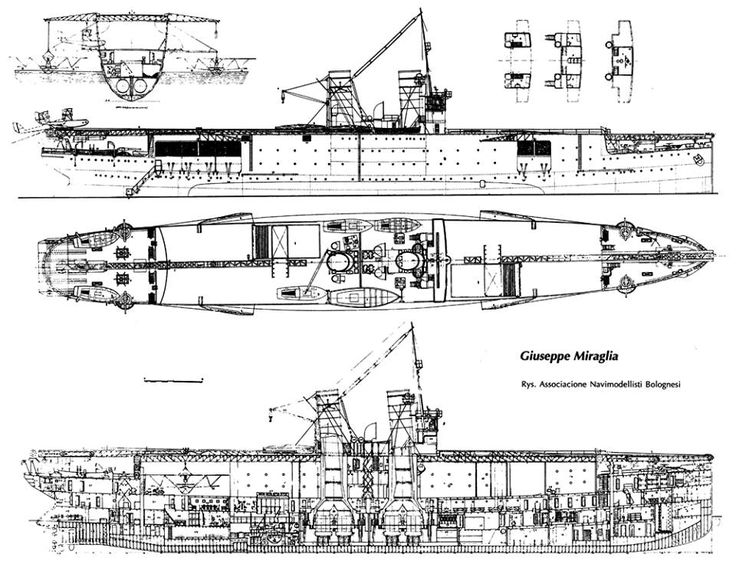
This experience was not lost to the admiralty which, soon after the war, thought about a new ship based on a faster, more modern and roomier basis. Therefore on 5 March 1921 the new Italian State Railway Company Città di Messina, a train ferry, already showed large hangars and could be a prime candidate for conversion. She was launched on 20 December 1923 and soon after, requisitioned by the Regia Marina and towed to La Spezia Nyd and arsenal for completion. It seems however that the ship, almost complete in 1925 (undergoing trials ?) capsized during a storm, was salvaged and repaired by Umberto Pugliese (Cernuschi, Enrico and Vincent P. O’Hara. in Jordan, John (2007). Warship 2007). She was completed for good and commissioned 1 November 1927.
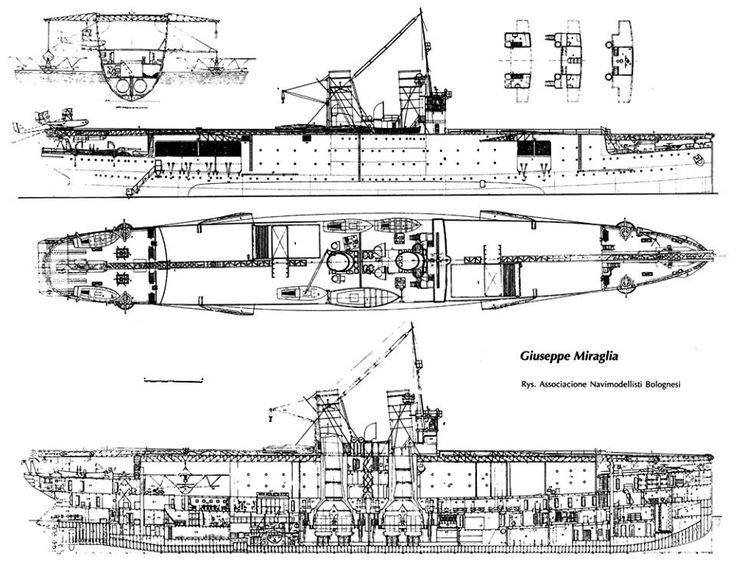
Design of the Miraglia
The ship, as completed was 5,400 tonnes normal, and 5,913 tonnes fully loaded, for a length of 121.22m, a beam of 14.99m, and a draught of 5.82 m. She was propelled y two shafts, 2 Parsons steam turbines fed by 8 Yarrow oil-firing boilers (oil 430 tons) with 16,700 shp and a speed of 21 knots (39 km/h).
Her Complement was 16 Officers, 40 NCOs, and 240 sailors and air crews including pilots. Her armament comprised four 102mm/35 Schneider-Armstrong guns Model 1915 fore and aft in open sponsons, twelve 13.2mm MGs, and her protection consisted in an armoured belt 70mm thick, and a deck 80mm thick. She has a forward and aft hangars covered by a flight deck which served for prelaunch maintenance of aircraft. The two axial catapults were located fore aft too. Planes had to be lifted through the hangar roof on platforms to the flight deck.
Her namesake was a WW1 Italian airman and marine officer that illustrated himself in many dangerous recce missions, awarded by six medals included the Medaglia d’argento al valor militare. He died in 1915 while testing a seaplane Macchi L 1746. His death was celebrated by poet Gabriele D’Annunzio.
Air complement
According to navypedia.org her first air complement was of 20 planes, M.5, M.7, M.18, P.6, small and four large seaplanes.
Later she carrier 17 seaplanes of the same type (a large fraction of which could be bring on deck simultaneously), which were launched by 2 steam catapults. Gantries helped recuperate these but this operation required calm weather, as they were loaded through side doors and bring into the hangar. This later air complement was composed of Macchi M.18 seaplane fighters/recce, and the last of IMAM Ro.43.
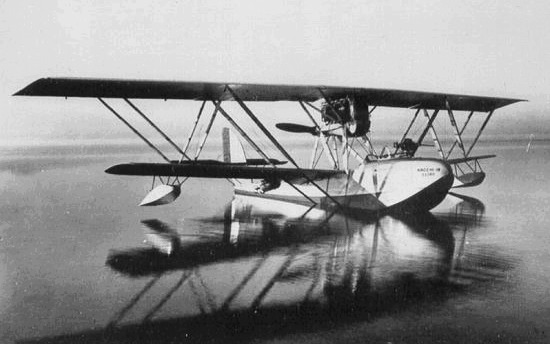
About the Macchi M18: A pusher biplane flying boat with unstaggered wings of unequal span braced by Warren truss-style struts. The version used by Giuseppe Miraglia was the M.18AR with folding wings. The plane could reach 187 km/h (116 mph) thanks to its Isotta Fraschini Asso 250, 186 kW (250 hp). Service ceiling was 5,500 m (18,000 ft) and range about 1000 km. Armament comprised a fixed bow Vickers 7.7mm MG and four light bombs carried underwing.
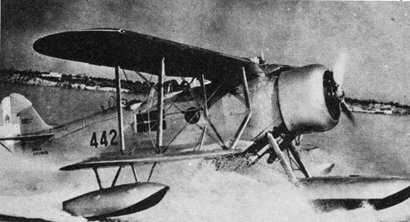
About the IMAM Ro.43 Idro These 1935 seaplanes became the main recce floatplanes of the Regia Marina, carried onboard all cruisers and battleships and stationed in many bases. Much more powerful, they relied on a Piaggio P.X R. 9-cylinder radial engine, 522 kW (700 hp), to reach 300 kph (162 knots, 186 mph) and her range was 1,500 km (590 nm, 678 mi) with a service ceiling of 6000m. Constructed with steel tubes and wood covered by soft alloy and fabric. Wings can be folded. The Ro.43 could carry a small payload in its main float, but no bombs. These were armed with a couple of 7.7 mm machine guns in the nose. 193 were built in all, in service in 1940 and until 1943.
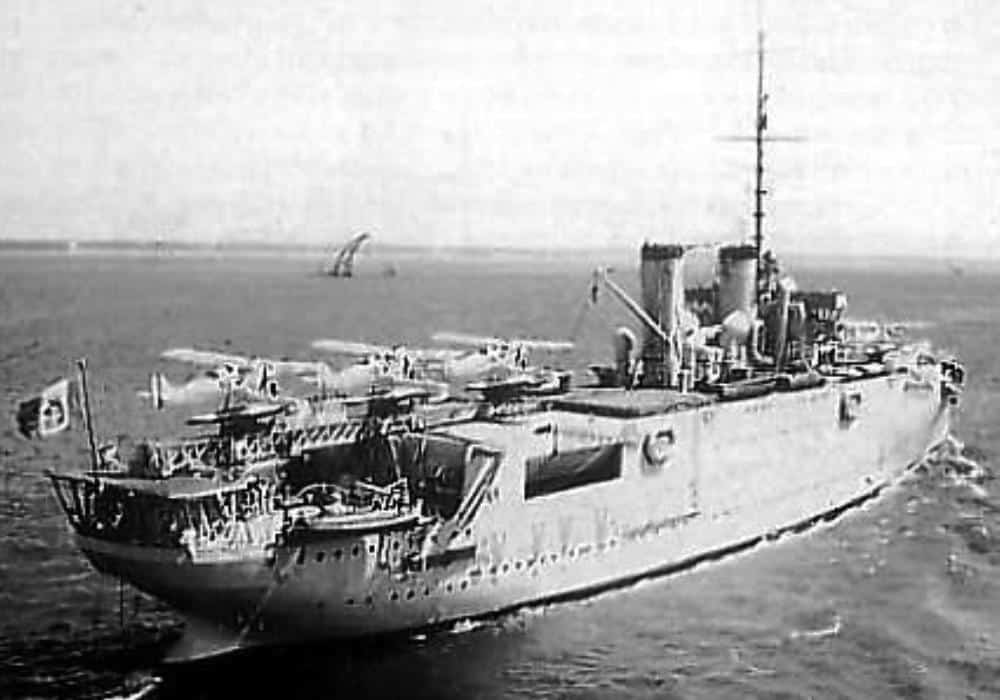
The Miraglia in operations
The first years were spent testing launching and recuperating planes. Intensive tests on catapults led to many adjustments. Miraglia participated first in the Second Italo-Abyssinian War. After 1937 she was also deployed to assist the Nationalists in the Spanish Civil War. When Italy declared war on France in 1940, the Miraglia operated as aircraft transport, performing training duties in home waters. After the Armistice she sailed to Malta for internment, just as the rest of the Italian fleet.
Now on the allied side, she replaced temporarily MTB depot ship HMS Vienna bombed and heavily damaged by the Luftwaffe in Bari, December, 2, 1943. After the war she was used to repatriate Italian POW. She ended as a barrack ship/workshop at Taranto. She was eventually sold for scrapped and be broken up in 1950, not converted back as a civilian ship.
Other Italian developments in aircraft carriers also includes the famous Aquila (“eagle”), a conversion of the trans-Atlantic passenger liner SS Roma which began in late 1941 at the Ansaldo shipyard in Genoa. However she was still not completed when the armistice was signed. We will see her later in an extensive article.
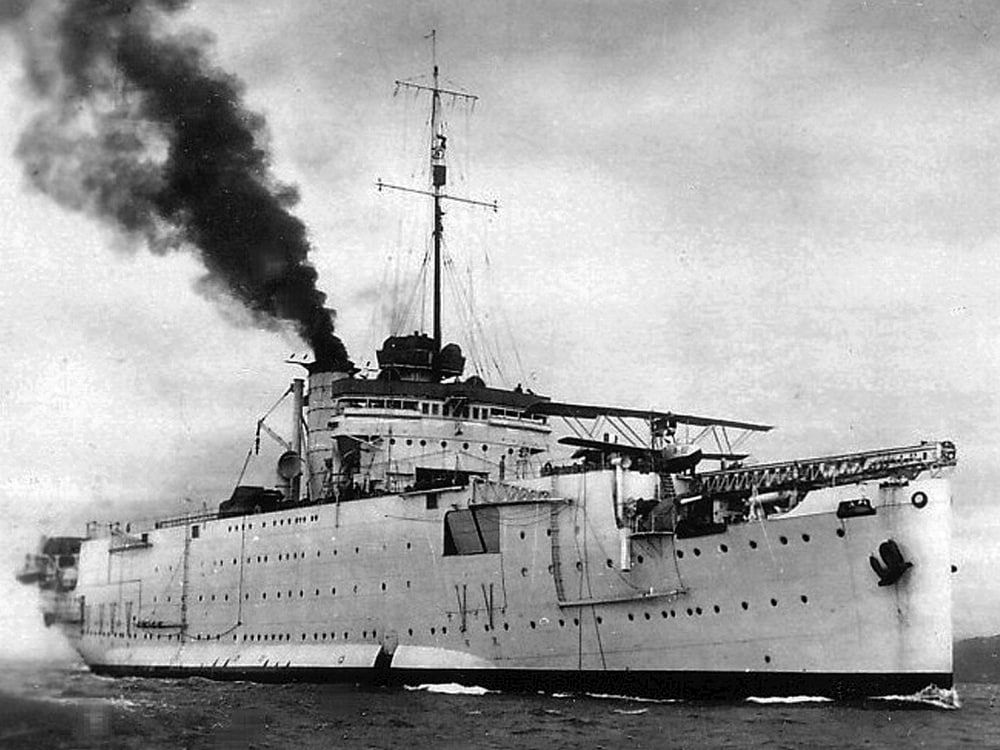
Links/Src
Conway’s all the world’s fighting ships 1921-1947
Bonfiglietti Project
navypedia.org/ships/italy/it_cv_giuseppe_miraglia.htm
On agenziabozzo.it
en.wikipedia.org/wiki/Italian_seaplane_carrier_Giuseppe_Miraglia
en.wikipedia.org/wiki/Seaplane_tender

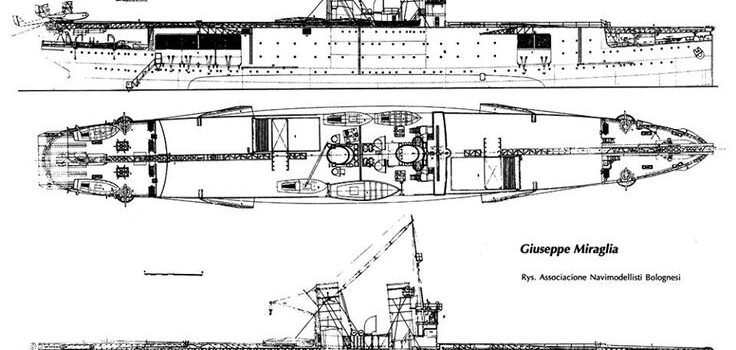
 Latest Facebook Entry -
Latest Facebook Entry -  X(Tweeter) Naval Encyclopedia's deck archive
X(Tweeter) Naval Encyclopedia's deck archive Instagram (@navalencyc)
Instagram (@navalencyc)





 French Navy
French Navy Royal Navy
Royal Navy Russian Navy
Russian Navy Armada Espanola
Armada Espanola Austrian Navy
Austrian Navy K.u.K. Kriegsmarine
K.u.K. Kriegsmarine Dansk Marine
Dansk Marine Nautiko Hellenon
Nautiko Hellenon Koninklije Marine 1870
Koninklije Marine 1870 Marinha do Brasil
Marinha do Brasil Osmanlı Donanması
Osmanlı Donanması Marina Do Peru
Marina Do Peru Marinha do Portugal
Marinha do Portugal Regia Marina 1870
Regia Marina 1870 Nihhon Kaigun 1870
Nihhon Kaigun 1870 Preußische Marine 1870
Preußische Marine 1870 Russkiy Flot 1870
Russkiy Flot 1870 Svenska marinen
Svenska marinen Søværnet
Søværnet Union Navy
Union Navy Confederate Navy
Confederate Navy Armada de Argentina
Armada de Argentina Imperial Chinese Navy
Imperial Chinese Navy Marinha do Portugal
Marinha do Portugal Mexico
Mexico Kaiserliche Marine
Kaiserliche Marine 1898 US Navy
1898 US Navy Sovietskiy Flot
Sovietskiy Flot Royal Canadian Navy
Royal Canadian Navy Royal Australian Navy
Royal Australian Navy RNZN Fleet
RNZN Fleet Chinese Navy 1937
Chinese Navy 1937 Kriegsmarine
Kriegsmarine Chilean Navy
Chilean Navy Danish Navy
Danish Navy Finnish Navy
Finnish Navy Hellenic Navy
Hellenic Navy Polish Navy
Polish Navy Romanian Navy
Romanian Navy Turkish Navy
Turkish Navy Royal Yugoslav Navy
Royal Yugoslav Navy Royal Thai Navy
Royal Thai Navy Minor Navies
Minor Navies Albania
Albania Austria
Austria Belgium
Belgium Columbia
Columbia Costa Rica
Costa Rica Cuba
Cuba Czechoslovakia
Czechoslovakia Dominican Republic
Dominican Republic Haiti
Haiti Hungary
Hungary Honduras
Honduras Estonia
Estonia Iceland
Iceland Eire
Eire Equador
Equador Iran
Iran Iraq
Iraq Latvia
Latvia Liberia
Liberia Lithuania
Lithuania Mandchukuo
Mandchukuo Morocco
Morocco Nicaragua
Nicaragua Persia
Persia San Salvador
San Salvador Sarawak
Sarawak Uruguay
Uruguay Venezuela
Venezuela Zanzibar
Zanzibar Warsaw Pact Navies
Warsaw Pact Navies Bulgaria
Bulgaria Hungary
Hungary

 Bundesmarine
Bundesmarine Dutch Navy
Dutch Navy Hellenic Navy
Hellenic Navy Marina Militare
Marina Militare Yugoslav Navy
Yugoslav Navy Chinese Navy
Chinese Navy Indian Navy
Indian Navy Indonesian Navy
Indonesian Navy JMSDF
JMSDF North Korean Navy
North Korean Navy Pakistani Navy
Pakistani Navy Philippines Navy
Philippines Navy ROKN
ROKN Rep. of Singapore Navy
Rep. of Singapore Navy Taiwanese Navy
Taiwanese Navy IDF Navy
IDF Navy Saudi Navy
Saudi Navy Royal New Zealand Navy
Royal New Zealand Navy Egyptian Navy
Egyptian Navy South African Navy
South African Navy






























 Ukrainian Navy
Ukrainian Navy dbodesign
dbodesign